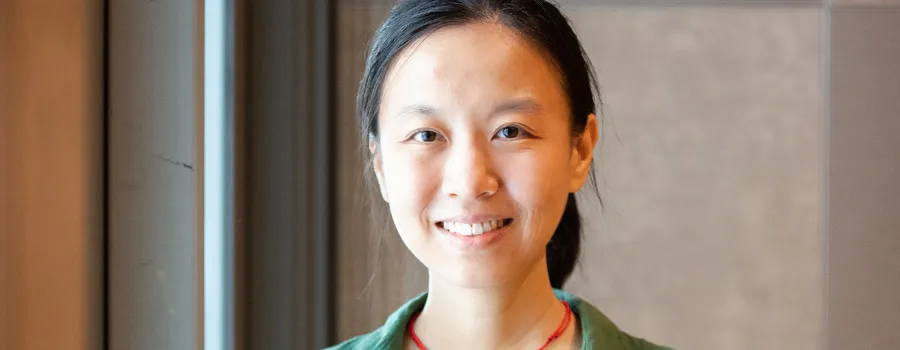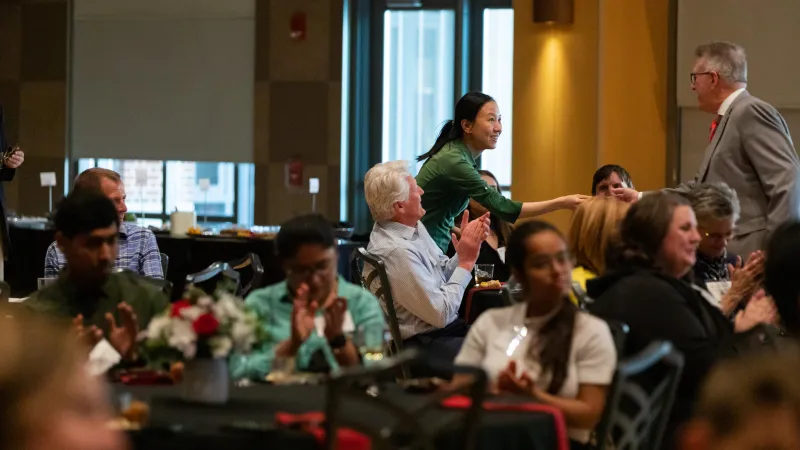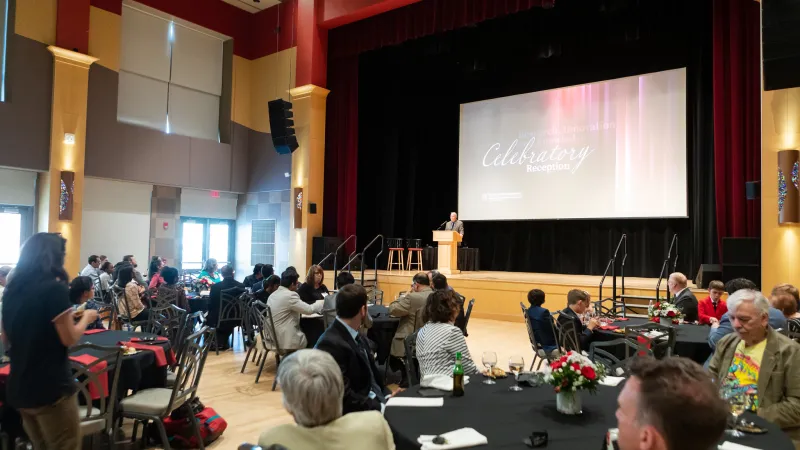
At a special reception held on Thursday, April 20, Jinghua Li, PhD, assistant professor of materials science and engineering in the College of Engineering was named Early Career Innovator of the Year. The Early Career Innovator of the Year award recognizes Ohio State researchers who are early in their career, actively working to promote commercialization of university intellectual property.
Jinghua Li, PhD
Li is an assistant professor of materials science and engineering, beginning in September 2019. Prior to joining Ohio State, she worked as a postdoctoral fellow with Professor John A. Rogers in the Department of Materials Science and Engineering at Northwestern University. Li graduated from Duke University in May 2016 with her doctorate degree in Chemistry. Her two focus areas are: fundamental understandings on synthesis chemistry and interfacial properties of thin-film materials as bio-interfaces and engineering efforts on application of these materials for the next generation wearable/implantable biomedical devices to bridge the gap between rigid machine and soft biology. Her faculty position is funded, in part, by the Discovery Themes Chronic Brain Injury program, which has promoted faculty hires and support of critical materials needs in the areas of imaging, diagnosis and treatment of brain injury. Li supports the Center for Design and Manufacturing Excellence, Nanotech West and the Center for Electron Microscopy and Analysis with her expertise in the function of biomaterials.

Li receiving the Early Career award.

Celebration reception opening remarks in the Performance Hall at the Ohio Union on the Ohio State campus.
Congratulations to the Early Career Innovator of the Year finalists
Shyam Bansal, PhD
College of Medicine
Department of Physiology and Cell Biology
Shyam Bansal is a cardiovascular immunologist who is trained in pharmacology and toxicology. He is interested in identifying the role of immune cells, specifically CD4+ T-cells, in mediating left-ventricular dilatation and disease progression during heart failure (HF). Approximately 64 million people worldwide are afflicted with this deadly disease. Because there are no treatments to stop disease progression, around half of these patients die within the first five years.Using preclinical studies, Bansal has shown that T-cells are pathologically activated during heart failure and these errant cells are one of the key players that promote cardiac remodeling and HF progression. In subsequent studies, he characterized molecular pathways that are responsible for this pathological behavior and identified a drug moleculethat can selectively target these errant T-cells, inhibit their activation and stop HF progression – the first drug to be able to do so. Importance of Dr. Bansal’s research is also reflected from the fact that his work was recently featured in Time magazine’s The Future of Medicine and this drug was included as one of the promising therapies for the heart diseases. Bansal was selected as a finalist for the prestigious Melvin L Marcus Young Investigator award from the American Heart Association (AHA) in 2017 and the Outstanding Early Career Investigator award from AHA’s Council of Basic Cardiovascular Sciences in 2020.Bansal was also selected as the President of the Ohio Chapter of the American Physiological Society in 2022 and named to the Editorial Board of Circulation Research as an early-career member. While at Ohio State, Bansal has published several high-impact papers in highly reputed cardiovascular journals, has submitted two patents and have garnered funding from local as and national sources. In addition to several pilot grants, his laboratory is funded through several grants from the National Institutes of Health.
Christo Sevov, PhD
College of Arts and Sciences
Department of Chemistry and Biochemistry
Christo Sevov was born in Sofia, Bulgaria and moved to the US at the age of four. He spent his formative years in South Bend, IN and received his bachelor’s degree 2009 from the University of Notre Dame. There, Sevov worked with Olaf Wiest on photocatalyzed cycloaddition reactions with selectivities that complement those of traditional Diels-Alder processes. Sevov earned his doctorate in 2014 after beginning his studies at the University of Illinois Urbana-Champaign with John Hartwig and later moving with the group to the University of California Berkeley. His research involved the development of methods and mechanistic study of metal-catalyzed additions of C–H, N–H, and O–H bonds across alkenes. Following his doctoral studies, Sevov conducted his postdoctoral work with Melanie Sanford at the University of Michigan. Applying an organic chemist’s approach to energy storage, Sevov designed new organic and organometallic compounds that could serve as redox liquids for large-scale flow batteries. Sevov joined Ohio State in 2017 as an assistant professor in the Department of Chemistry and Biochemistry where he is merging his love of catalysis and electrochemistry.